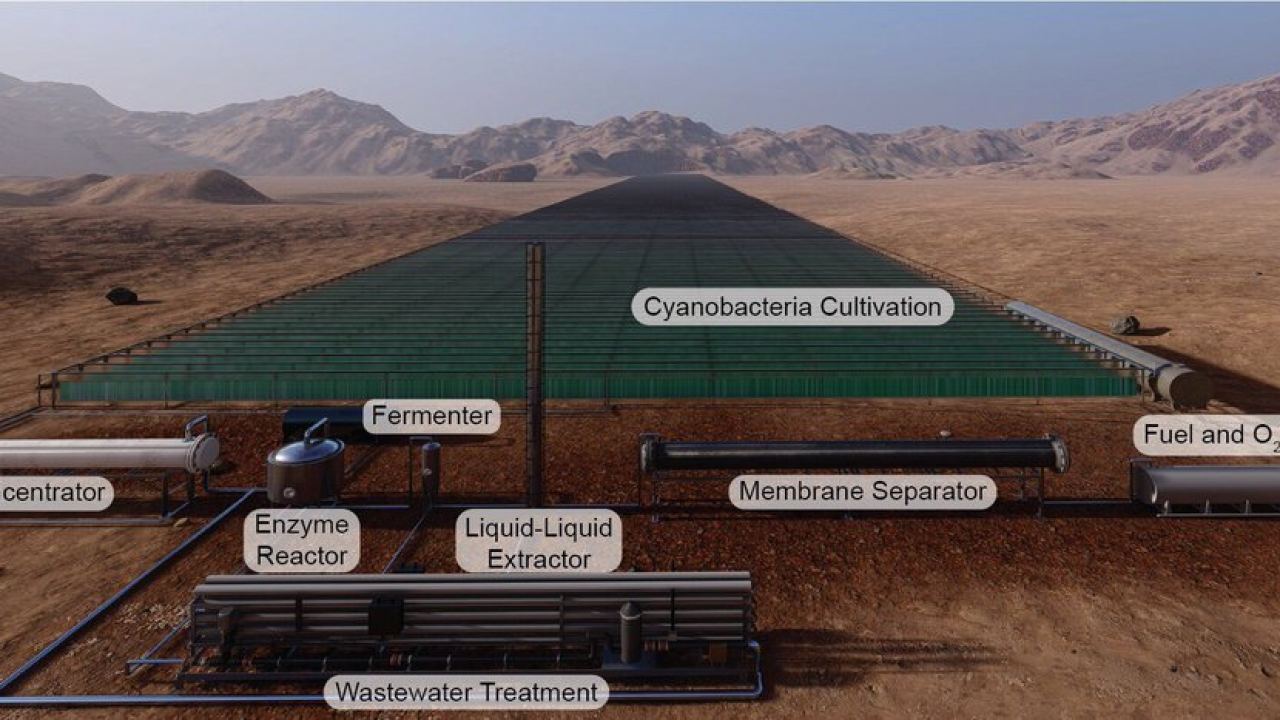A group of scientists from the Georgia Institute of Technology has developed a concept that bacteria will produce rocket fuel and liquid oxygen from atmospheric CO2 to power a spacecraft on its way back to Earth on a mission to Mars. Hi-Tech reviewed the publication in Nature Communications.
The researchers’ idea is that before the main mission to Mars, a series of “trackers” missions will be sent – samples of microorganisms and plastic materials needed to install photobioreactors in an area of four football fields.
In these reactors, sunlight and carbon dioxide from the atmosphere will enter the cyanobacteria. Under the influence of enzymes, they will produce sugars, which in turn, when interacting with E. coli, participate in the synthesis of 2,3-butanediol and oxygen, which will be separated at further stages of the process.
The team calculates that the process will be 32% more efficient than a proposed chemical plant that produces oxygen on Mars through chemical catalysis using methane delivered from Earth, although it will be three times as heavy. The next step will be to find ways to make the equipment smaller and lighter, and the biological side of the process faster and more efficient.
“We also need to conduct experiments to demonstrate that cyanobacteria can be grown in Martian conditions,” says Matthew Realff. – We have to account for the difference in the solar spectrum on Mars, both due to distance from the Sun and due to the lack of atmospheric filtering of sunlight. High levels of UV light can damage cyanobacteria. “
According to the Georgia Institute of Technology, the Martian ascending vehicle (MAV) will need 30 tons of methane and liquid oxygen to put 500 kg of payload with a crew into orbit. While Mars can produce liquid oxygen, methane must come from Earth, which means that the initial payload taking off from Earth weighs 500 tons and costs $ 8 billion to transport additional fuel.












